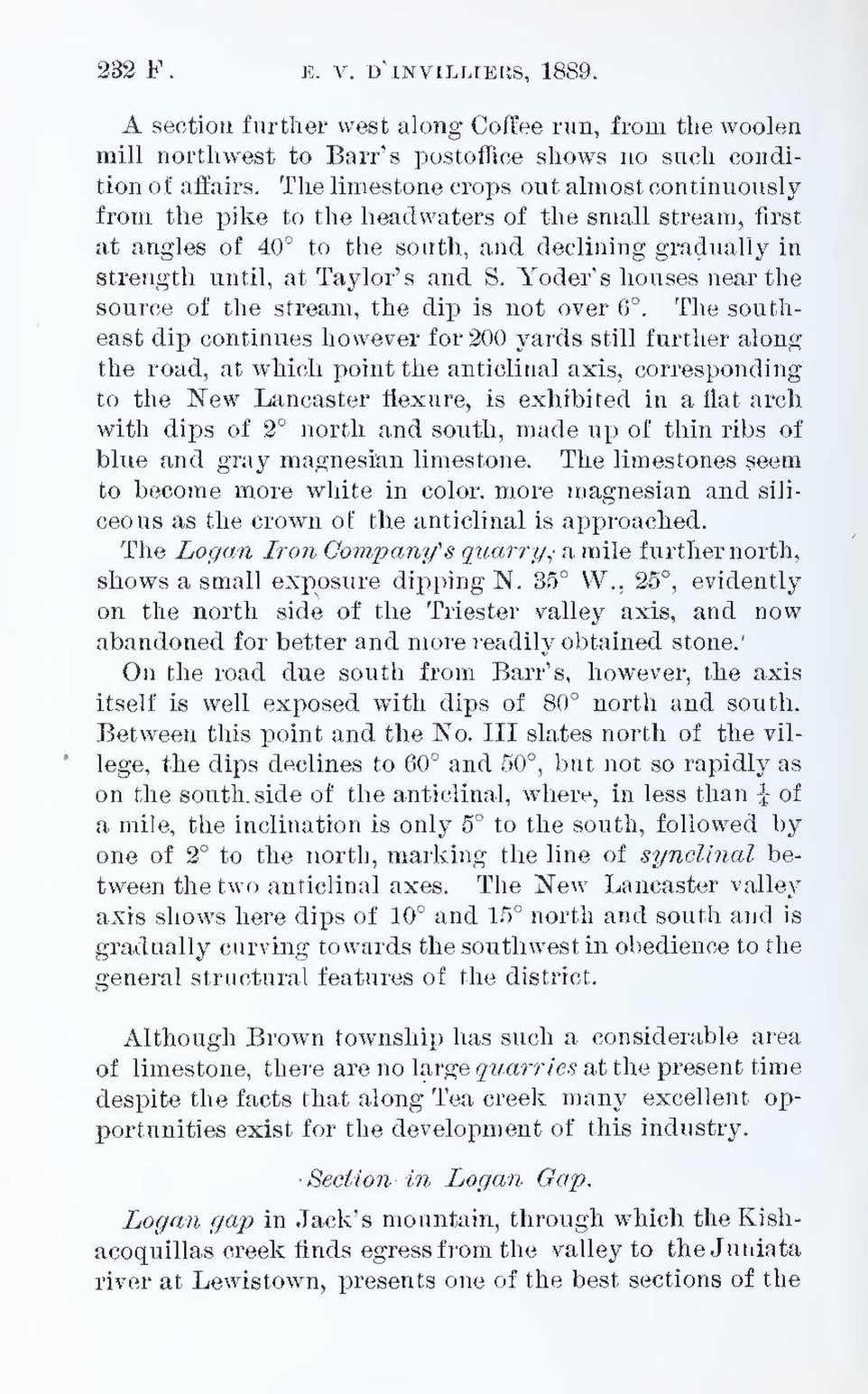A section further west along Coffee run, from the woolen mill northwest to Barr's postoffice shows no such condition of affairs. The limestone crops out almost continuously from the pike to the headwaters of the small stream, first at angles of 40° to the south, and declining gradually in strength until, at Taylor’s and S. Yoder’s houses near the source of the stream, the dip is not over 6°. The southeast dip continues however for 200 yards still further along the road, at which point the anticlinal axis, corresponding to the New Lancaster flexure, is exhibited in a flat arch with dips of 2° north and south, made up of thin ribs of blue and gray magnesian limestone. The limestones seem to become more white in color, more magnesian and siliceous as the crown of the anticlinal is approached.
The Logan Iron Company’s quarry, a mile further north, shows a small exposure dipping N. 35° W., 25°, evidently on the north side of the Triester valley axis, and now abandoned for better and more readily obtained stone.
On the road due south from Barr’s, however, the axis itself is well exposed with dips of 80° north and south, Between this point and the No. III slates north of the villege, the dips declines to 60° and 50°, but not so rapidly as on the south side of the anticlinal, where, in less than ¼ of a mile, the inclination is only 5° to the south, followed by one of 2° to the north, marking the line of synclinal between the two anticlinal axes. The New Lancaster valley axis shows here dips of 10° and 15° north and south and is gradually curving towards the southwest in obedience to the general structural features of the district.
Although Brown township has such a considerable area of limestone, there are no large quarries at the present time despite the facets that along Tea creek many excellent opportunities exist for the development of this industry.
Section in Logan Gap.
Logan gap in Jack’s mountain, through which the Kishacoquillas creek finds egress from the valley to the Juniata river at Lewistown, presents one of the best sections of the
